Just like a storefront, your website can draw people in or people can overlook it. Optimizing your website is crucial to helping your visitors have a great experience on your page. Each visitor is asking questions or trying to solve problems. Having a successful website ensures every visitor turns into a lead, and hopefully, a loyal customer.
We asked this seasoned SEO pro, Stoney deGeyter for some great optimization advice to share with our readers. If you love this insight, be sure to catch him on our podcast, Ponderings from the Perch: Priscilla Hosts the Best Damn Website Episode Ever.
Step 1: Starting Point for Web Page Optimization
Finding a starting point is always hard. The best things to acknowledge are your resources and tools and how you can use them. You have a website, but what tools do you have to track, analyze and store your website information? First, you'll need to look into what Content Management System (CMS) you have. Don't have one yet? We've got tips for you too.
A CMS is a resource that can help one build and manage a website without the hassle of coding. Some well-known CMS include HubSpot, WordPress, and Wix. These platforms provide you with a boatload of data and insights to help you figure out what pages are doing well, and what ones may need some tweaking.
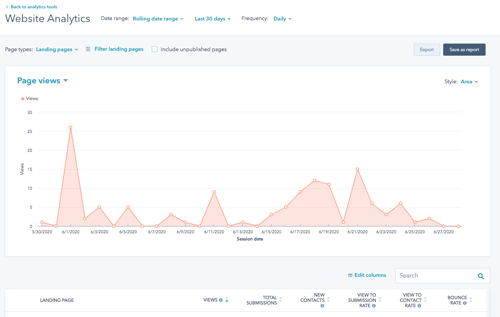
Analyzing pages that already rank well is a good place to start. This may seem counterintuitive, but these are often the pages where the majority of your website’s visitors are already going and is where you should focus your efforts to get a few quick hits of value. Small improvements on these pages can have a huge impact and help increase your overall click-through and conversions rates.
But you also want to consider which products or services are most important to your company. Whether its top-selling products or the most profitable, these are usually going to be the pages you will get the most bang for your buck by improving.
Step 2: Determine Page Purpose and Topic
Everything you do on your website has a purpose. Whether that is selling your products, educating the world wide web or connecting with your audience, each page has it’s own purpose (some nihilists may disagree, but that’s neither here nor there). Before you can optimize any page on your site, you need to have a clear grasp of what the visitor should do next.
As Yoda once said: “To get the visitor to take the ‘next step’ a page's true purpose is.” Whether that is subscribing to your blog, downloading a resource, giving you a call or purchasing your wares, everything on that page must support driving your visitors toward taking action and guide them through their stage in the buyer’s journey.

When optimizing your pages it helps to look at the bigger picture and understand exactly where your buyer is at in their journey. Put yourself in your visitor’s shoes and ask yourself what are they expecting to get from your page.
When optimizing the purpose of your page, it makes the topic a bit more clear! What do you need to hone in on? The topic should always answer your ideal client questions. Are you teaching them how to write a blog or are you selling them on why they should hire you to write blogs for them? There’s a big difference.
Step 3: Optimize around the Buyer’s Journey
After matching page purpose with visitor intent, it’s time to align your content with the buyer’s journey. This means crafting content that intrigues, delights, informs, and most importantly, addresses your audience’s needs in the different stages of the journey they’re on. Here are some great options to do so:
- Blogs
- Podcasts
- Vlogs
- Infographics
- Videos
- Downloadable Guides
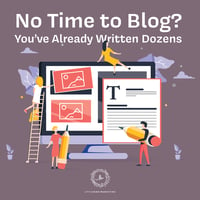 NO TIME TO BLOG?
NO TIME TO BLOG?
You've already written dozens.
Here's where to find them:
This is also where you consider your call-to-action (CTA), or in other words, the action you want your visitor to take after engaging with your content. Are they seeking advice, weighing their options or looking to buy something? The CTA you provide them with may be one small step in their journey, but can be one giant leap for your lead generation.
Step 4: Research Relevant Keywords
Once you have hunkered down and framed your page within one of the buyer’s journey stages, the next step is to consider how visitor’s are finding your website. What words are they searching for and are those included in your web page’s content?
Including relevant keywords in your content is one of the main ways to optimize your page and make sure it ranks high enough on search engines to be found. This means taking the time to do keyword research and figuring out exactly what keywords you should be targeting for visitors to find you in the deep, dark depths of the web.

Here are a few free keyword resources to use:
1. Google Keyword Planner: a tool to conduct keyword research (note: you’ll have to set up a Google Adwords account to use this tool).
2. Google Trends: a tool that lets you enter multiple keywords and filter by location, search history and category.
3. Keyword Tool.io: a tool that uses Google Autocomplete to generate hundreds of relevant long-tail keywords for any topic.
4. Ubersuggest: a tool to easily generate a list of keywords for you based on what is working for your competitors and based on what people are typing into Google.
Here are a few excellent paid keyword resources to use:
1. Ahrefs: a tool that provides thousands of keyword ideas, letting you analyze their ranking difficulty and calculate their traffic potential.
2. Moz: a tool that improves how you discover and prioritize keywords to target in less time.
3. SEMrush: an easy-to-use tool that helps you build a list of keywords to use on your website.
It's also important to reference how your competitors are ranking. Are they using the same keywords you? Are there any content gaps that you have an opportunity to rank for? Make sure when you’re developing your list to incorporate both short-tail keywords and long-tail keywords (i.e. phrases containing more than three words). For example, if your short-tail is "Lead Generation”, your long-tailed keyword may be "How to track lead generation." A good way to think through this is by asking yourself questions that go along with your keywords.
Also, make sure to not only focus on relevant keywords, but realistic. If a keyword already has a high search volume and difficulty score, chances are slim that you will ever rank for it on the first page of the SERPs.
Step 5: Optimize Content with Keywords
To optimize your content with keywords, the key is making sure to include your keywords where they should be included. A long time ago in a galaxy far, far away there was a tendency to unabashedly cram as many keywords onto one single page as possible. This is heinous act is known as keyword stuffing, and it is a path to the dark side.

Instead, use keywords in a meaningful way, such as including them in your title, descriptions, headings, image alt text and URLs. This will seem like a lot to do, but it's well worth the time. When search engines crawl your website, they’ll recognize proper keyword optimization and reward your pages accordingly.
Titles:
The goal for your titles is to make them search friendly and highly click friendly. HubSpot recommends trying, to keep it below 70 characters so it doesn’t cut off on search engine results pages.
Descriptions:
Also called meta descriptions, are what you see in the search results right under the URL. Though this has no actual effect on your rankings, taking some time to craft an attention-grabbing description is highly recommended. Google and other search engines bold keywords in the description when they match search queries, helping attract visitors to your page and increase click-through rates.
Image Alt Text and Titles:
Did you know Google and other search engines don’t see photos the way your readers do? The image alt text is how search engines read your image, which is why including your keyword in the title and the alt text is crucial. Remember, the biggest focus when optimizing is including keywords as naturally as possible. Here is an example of proper alt text:
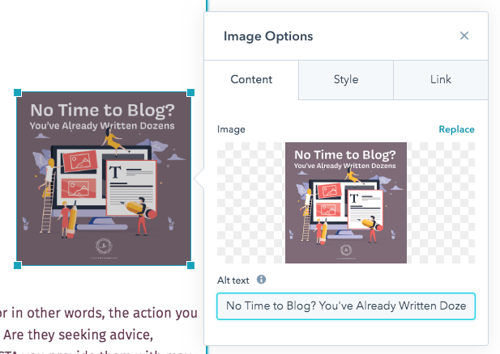
URLs and Headings:
URLs will normally reflect your page’s title, and at this point you know your title should already include at least one of your keywords, right? Right! It’s important to double-check this. Keeping pages reader-friendly will allow visitors to know exactly where they are on your website. Placing a keyword variation or the keyword in the headline will only draw your audience in more and help guide them through your content with ease.
However, there is a balance. Remember, you will be penalized for keyword stuffing. Always let them flow as organically as possible.
Step 6: Optimize Page Structure
Reviewing both the visible and invisible structure of a page is important. A poorly coded page will often prevent your otherwise perfectly optimized content from getting the attention it deserves. If you want check out how your page is doing, get a quick analysis from HubSpot’s free Website Grader or Neil Patel’s SEO Analyzer.
Optimizing the invisible coding structure can be broken down in header tags (H1-H6). Think of headers as a hierarchy for your content. H1 tag reflects the web page's topic and incorporates the primary keyword. H2-H6 are optional but help arrange the page for easy navigation, these tags will include supportive keywords. According to Search Engine Journal using heading tags, adds architecture of the content. H1-H6 tags allow search engines to read and understand the content more efficiently, and for users, it provides an anchor to help follow and digest the information.

You want to optimize the visible structure of your web pages as well. Every page is different and presents opportunities to add in different visual elements. Make sure your page doesn't just conform to a template when a bit of visual customization will give your visitors a better overall user experience.
While you pages should retain brand consistency, you want to make sure there is a enough variety between them to keep your visitor’s interest piqued. Diversify your pages with images, gifs, videos, headers, bolded text, etc. for better engagement and overall ranking.
Step 7: Optimize with Usability
Finally, you need to take a look at your page from a user’s perspective. Sometimes it's easy to get so lasered in on the minutia that you forget the big picture. Take a moment, pause and make sure the pieces of your web page tie together in a way that meets your audience’s needs and expectations.
That means putting away your magnifying glass and looking at your website with a bird’s-eye view. Is it easy to navigate and find the information? Is it easy to contact your business or leave a message?

It may sound obvious, but taking the time to look at your website can help ensure you are creating a positive overall experience. Remember, the ultimate goal is to create leads from your website, and turn those leads into loyal customers. Without a good user experience, you not only hurt your brand image, but risk valuable lead generation as well.
Step 8: Optimizing with Marketing Automation
Once you have gone through your website and optimized all your pages, it’s time for the leads to begin rolling in. You’ve thought through the buyer’s journey, created engaging, keyword-focused content, are ranking in the SERPs and now turning visitors into leads. But where are you going to store all that data? There is one last thing you can do on the back-end to optimize your website and sync all your efforts together - marketing automation.
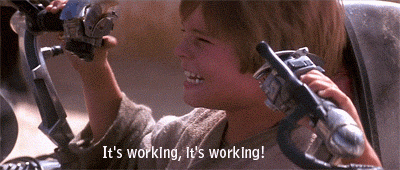
Marketing automation helps streamline, automate and analyze marketing tasks while providing the ability to create workflows to further nurture and generate leads. At Little Bird, we use HubSpot, which automatically (and conveniently) integrates with its own CRM to store all our data under one roof.
At the end of the day, marketing automation helps provide a more personalized experience for customers, but it also can make your life one heck of a lot easier, providing extra time to stay on top of things such as who’s picking up the kids, what’s for dinner, and of course, web page optimization.
Whatever you do, don’t forget your website is a revolving door and requires continuous updates and maintenance. You'll want to keep a close eye on what is working and what isn't, adjust, and remember to have fun with it. Now go ye forth and do great things!
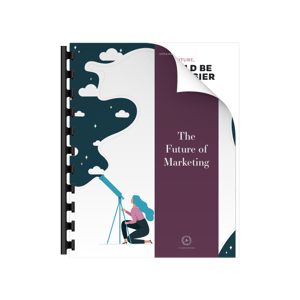 IS YOUR MARKETING PLAN FUTURE PROOF?
IS YOUR MARKETING PLAN FUTURE PROOF?
The way your audience views content is changing rapidly. Your marketing needs to be changing too. We can't time travel just yet, but this guide will give you a glimpse of what to expect in the Future of Marketing. Download this guide to invest in your marketing plan's future!
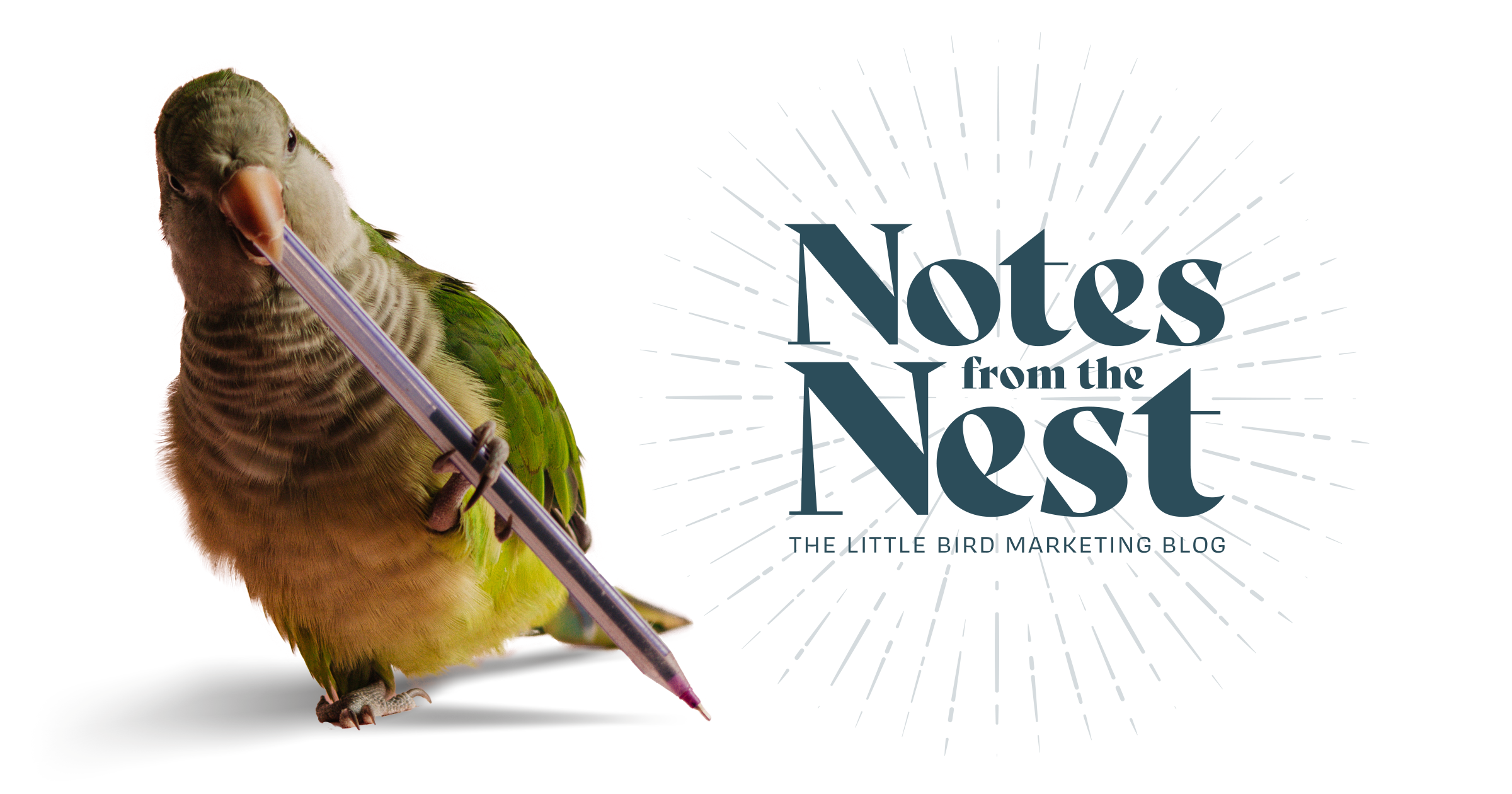
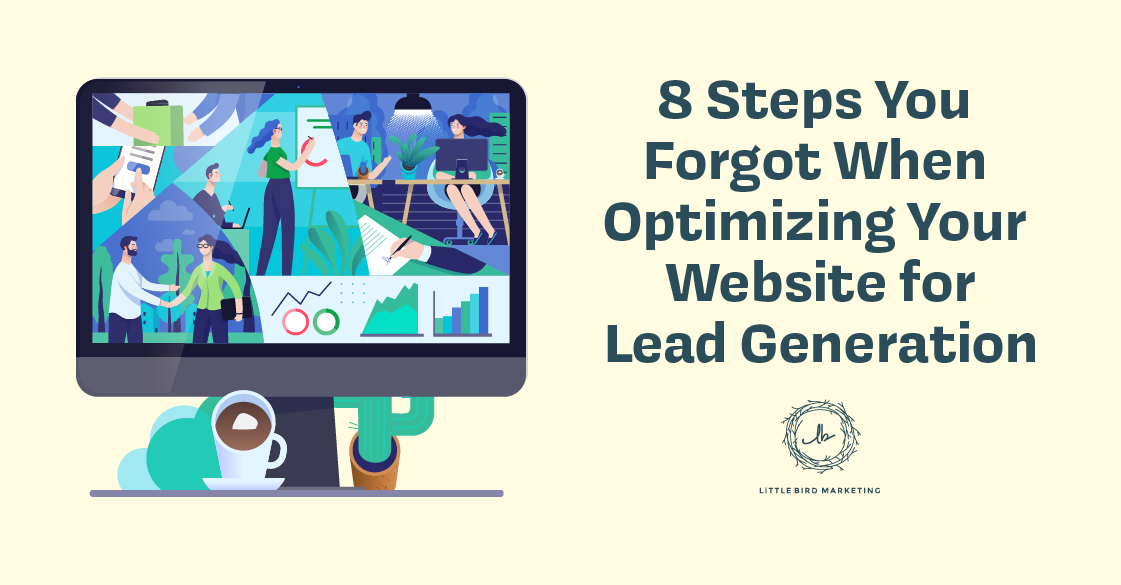




Let Us Know What You Thought about this Post.
Put your Comment Below.